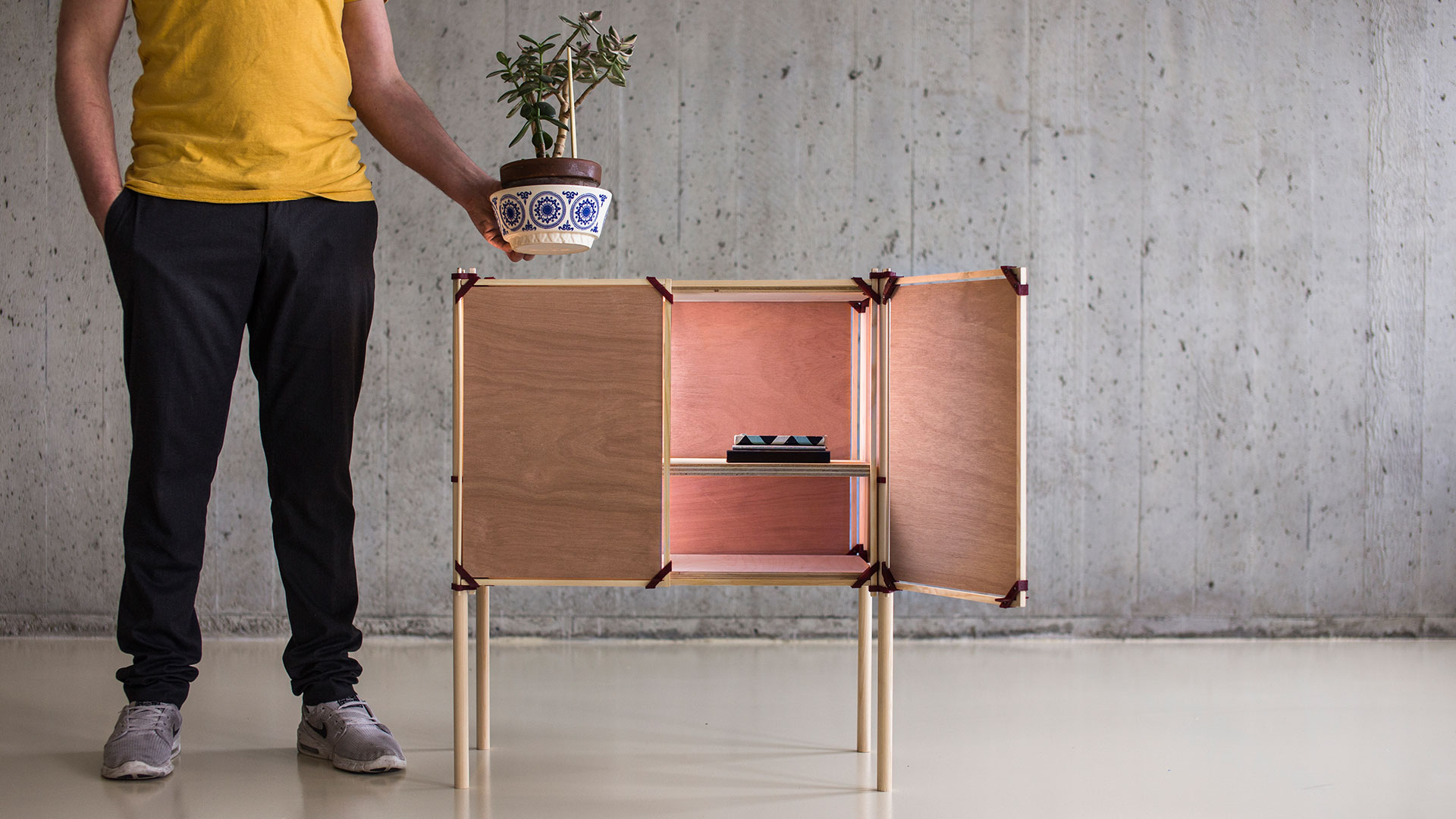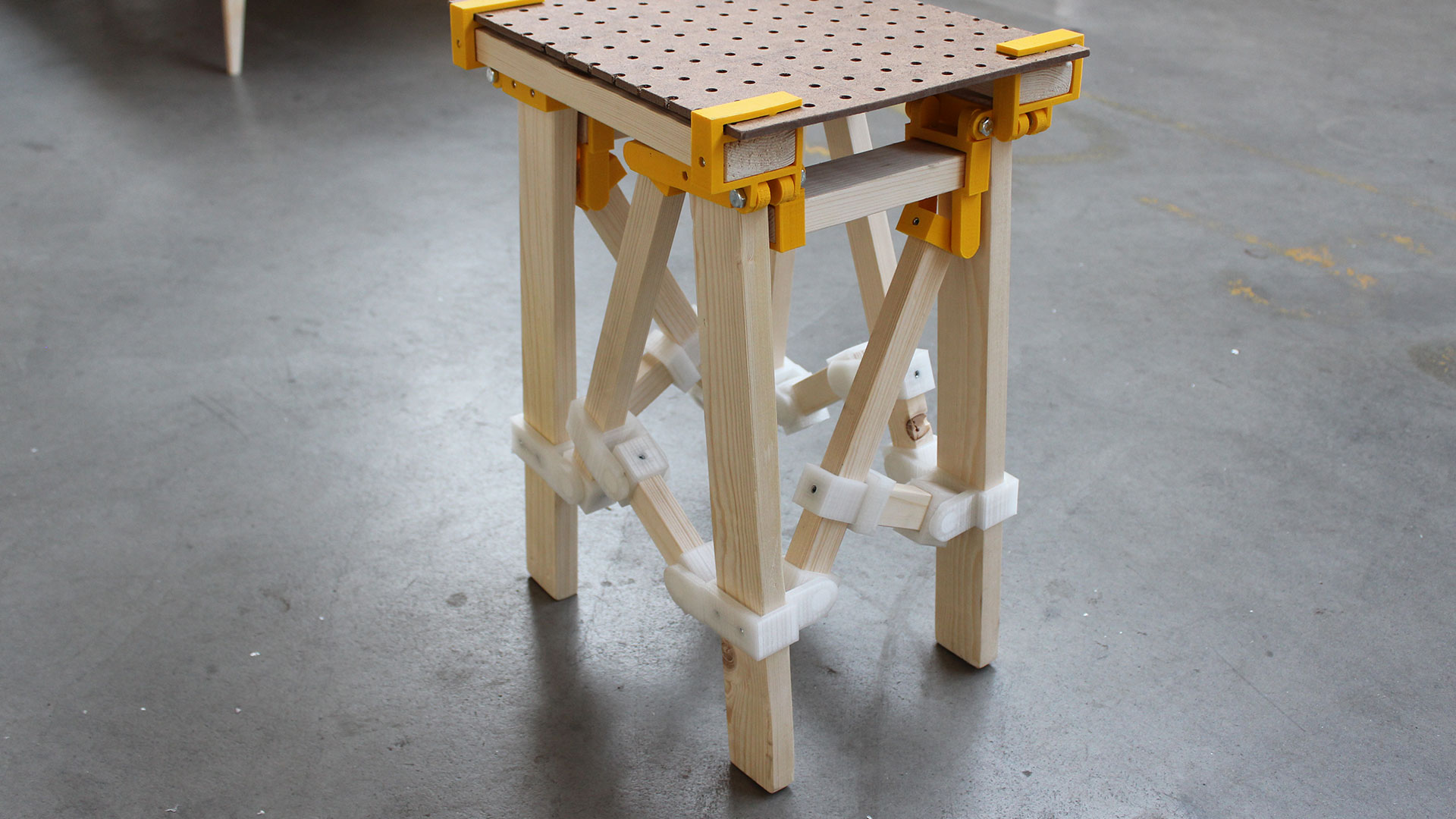
Special materials
Using furniture as a most relatable user context, we develop print optimalization software and user interfaces to enable consumers in Personal 3D Printing. By using tools that measure your surrounding world, the software creates designs that are ready to be produced and used at home.
Usability starts with the right materials. In collaboration with our innovation partner in special materials we see opportunities to redefine aspects of usability and material expectations. New materials have to adapt to the fast changing digital world. Material is made applicable for Personal 3D Printing in two ways: From a material push, where material qualities and specifications are part of the experiment in product design. And a material pull, starting from necessary usability aspects and asking which materials could provide the needed qualities.
“An Evolution in
Material Application“


Design challenges
These prototypes as a whole are human sized, much larger than most consumer printer objects. This means physical forces come into play, as people sit on or interact with furniture. Stability and risk of falling or breaking are key aspects, which need to be considered in the design of the whole and its parts.
In order to increase usability, specific software capabilities and material qualities are necessary. Making the furniture case ideal to speed up the testing and developing proces, which we adapt to multiple cases.
Strong and flexible
Printable material that can absorb forces coming from all directions. It should be rigid but at the same time flexible. In comparison to common 3D printing materials; ABS is a strong plastic with a mild flexibility and PLA is more rigid, but it is friable in handling complex shapes.
Thin material that keeps its strength in the end process means more possibilities in fine printing techniques. Not only is there a cost reduction in saving excess material, it also gives more design freedom. Smaller margins can be achieved, making more room for movement of parts.
No post print process
The printed material is 100% finished after the printing process. Meaning it doesn’t need to be handled manually in order to get the smooth finished look. The product for the end user can be delivered within the digital manufacturing process.
Rough and smooth
In order to facilitate better and easier assembling, the usability can be integrated within the printed material. By making the inside rough the different parts have a stronger hold when connected. The smooth outside makes it more comfortable and appealing in product usage.
